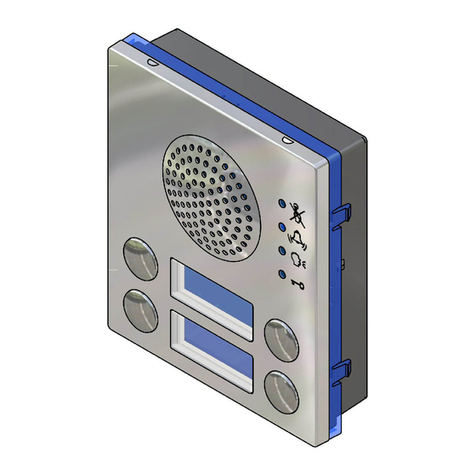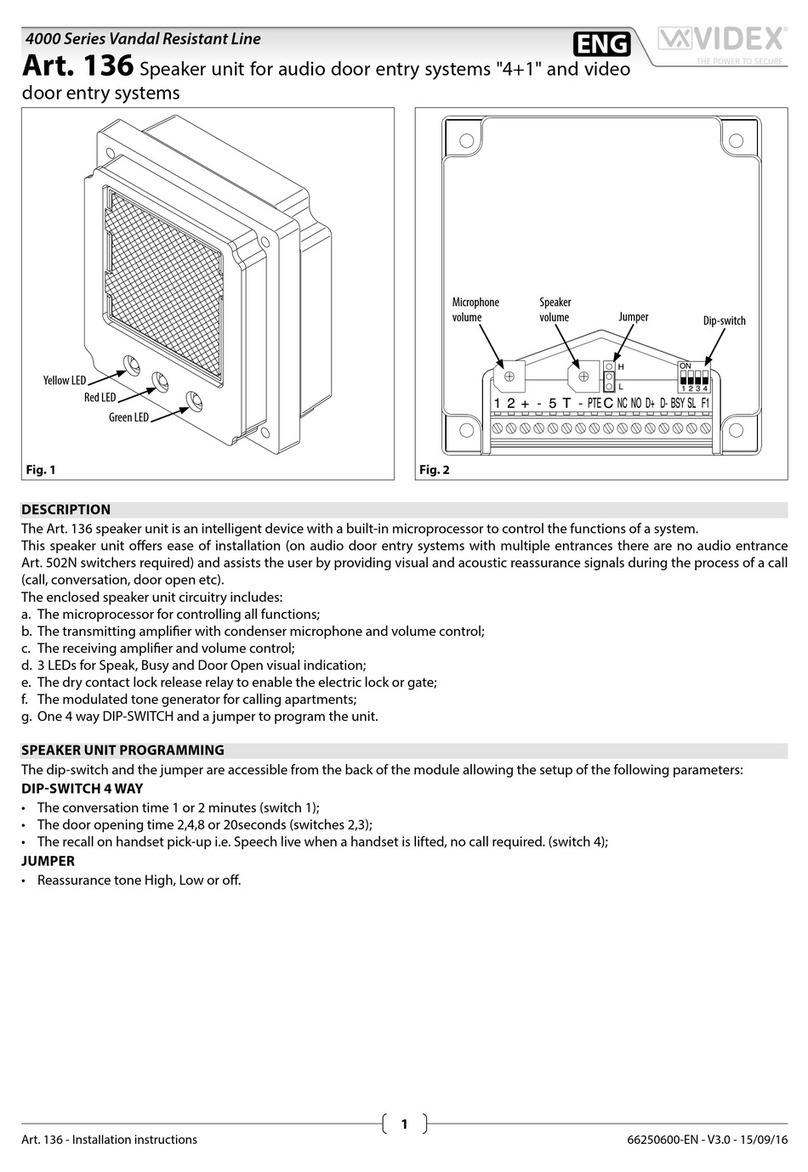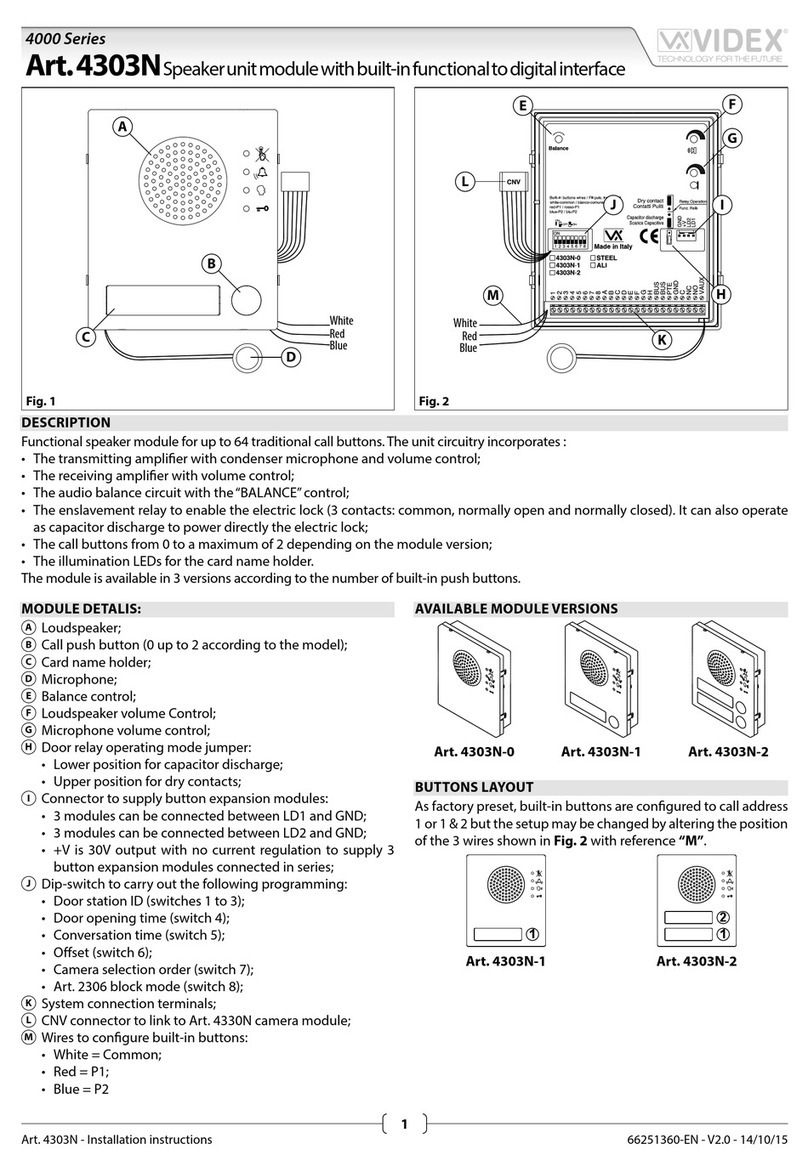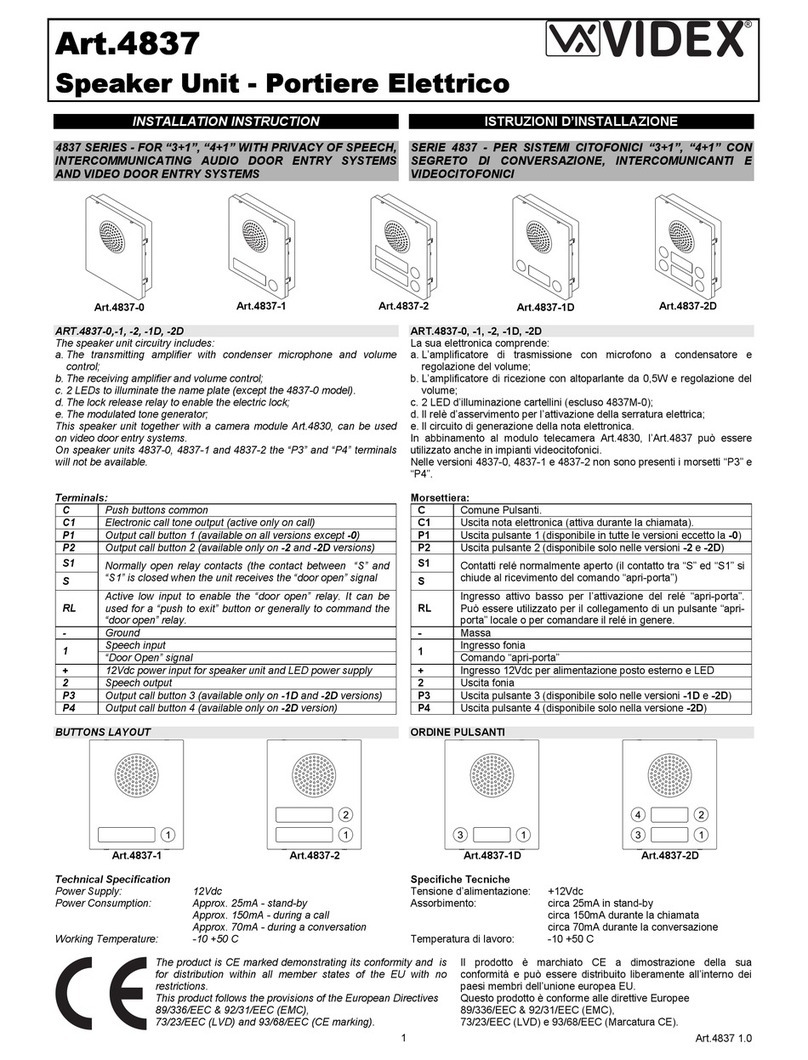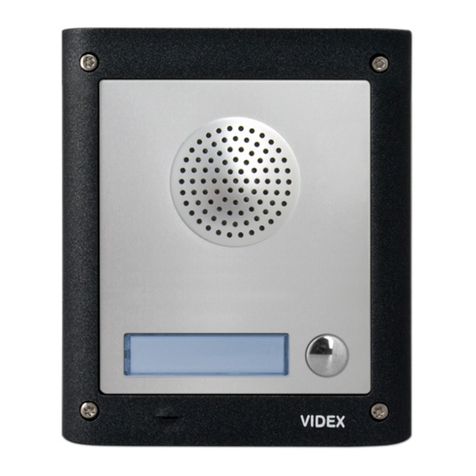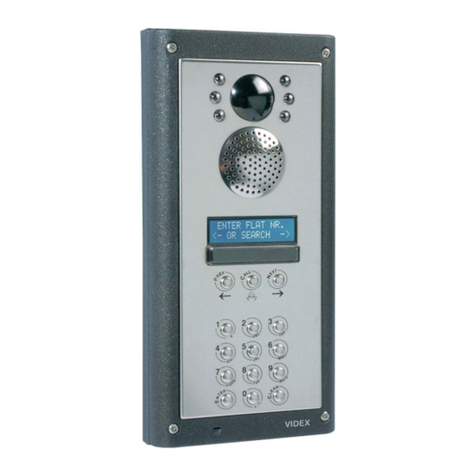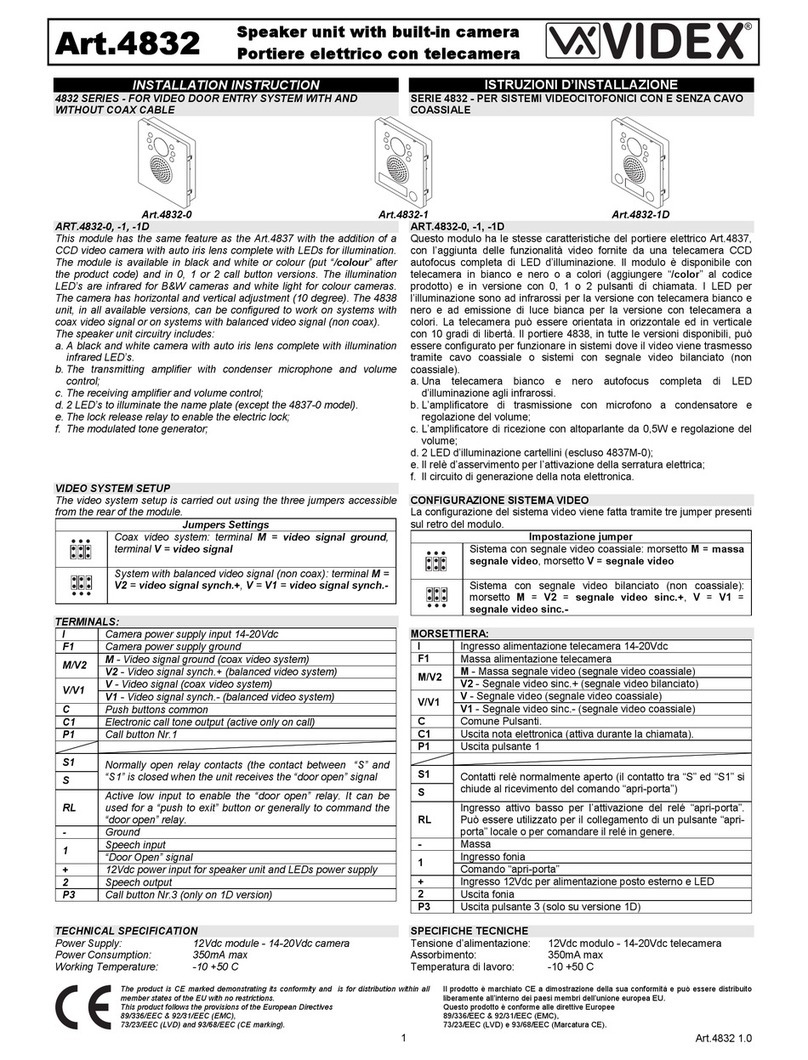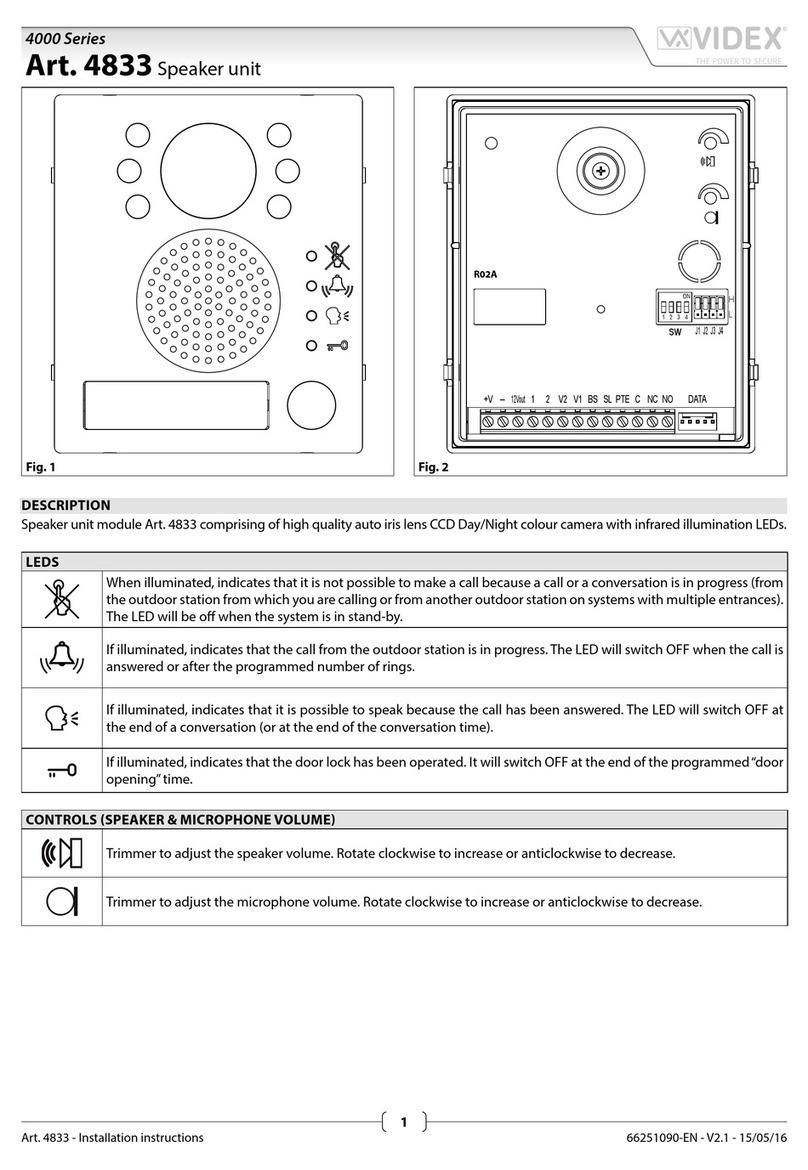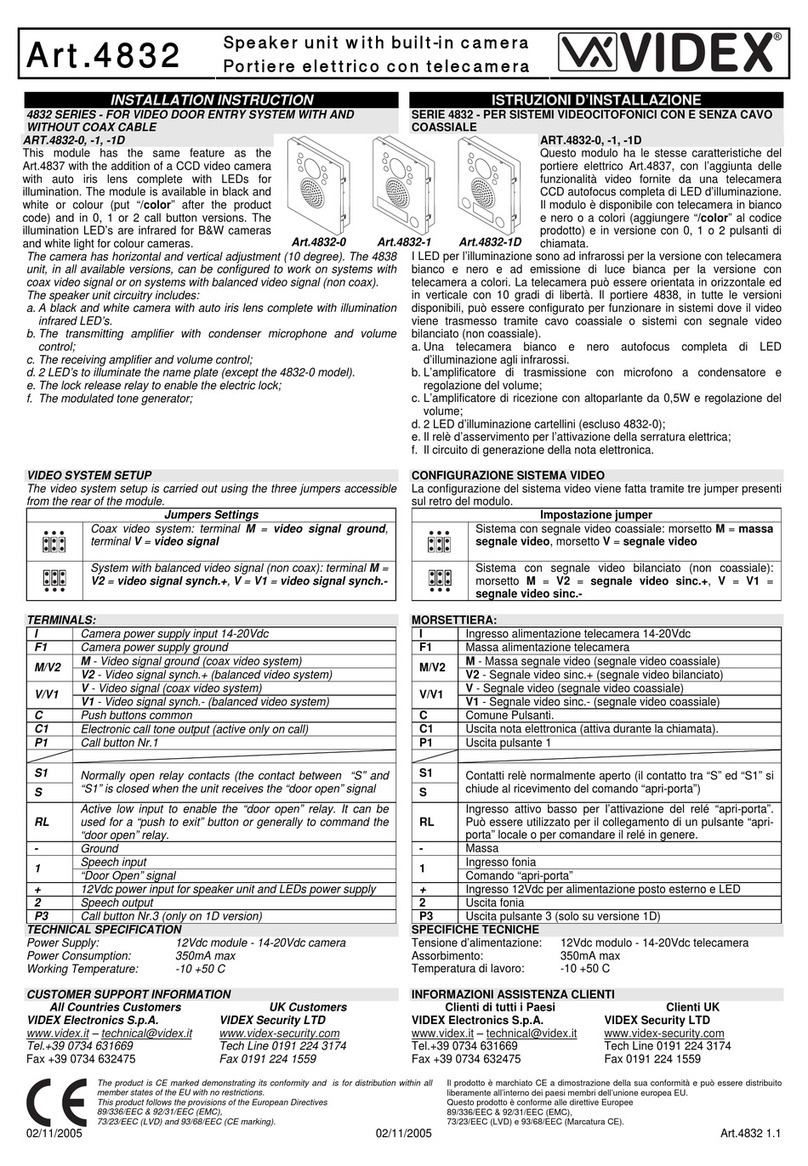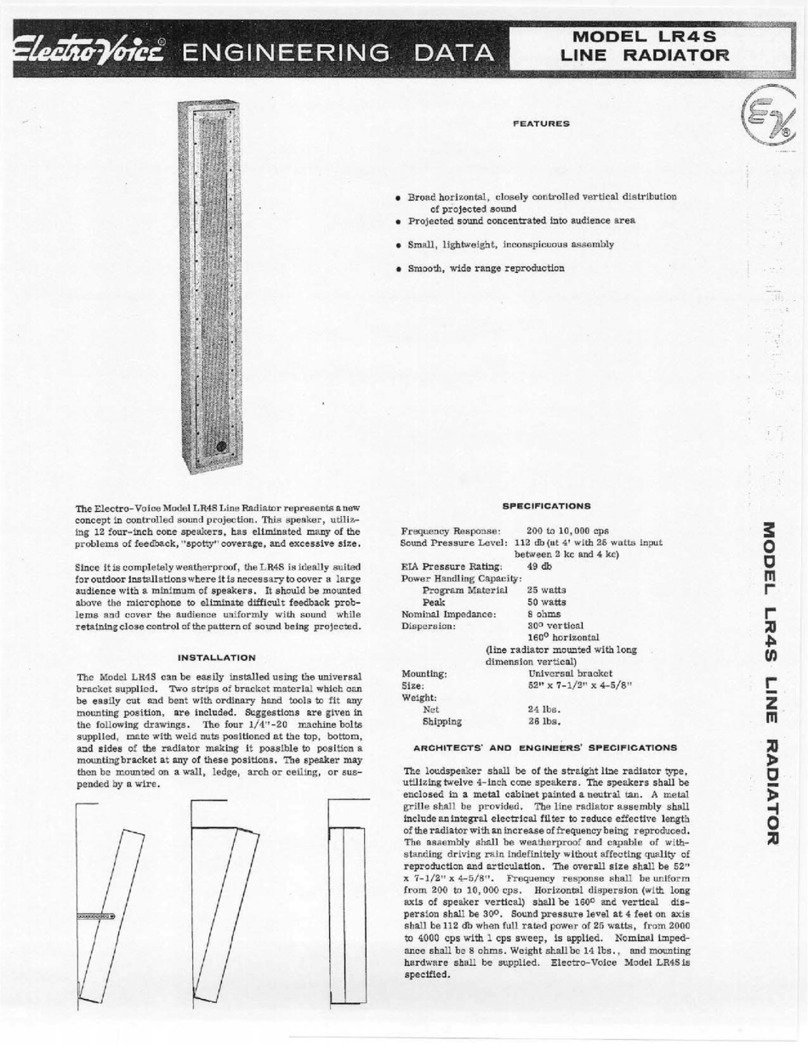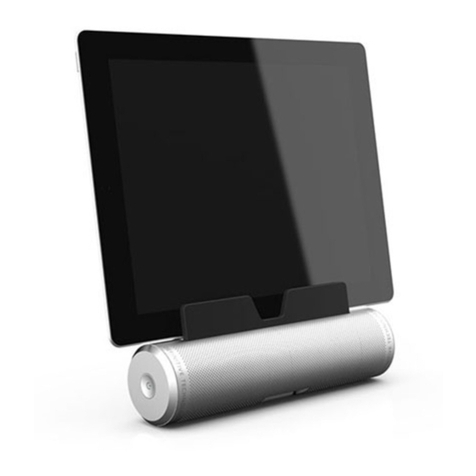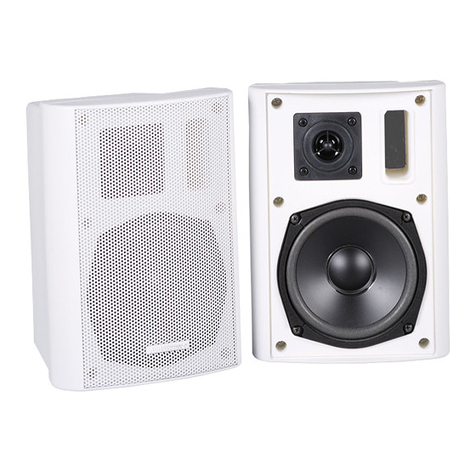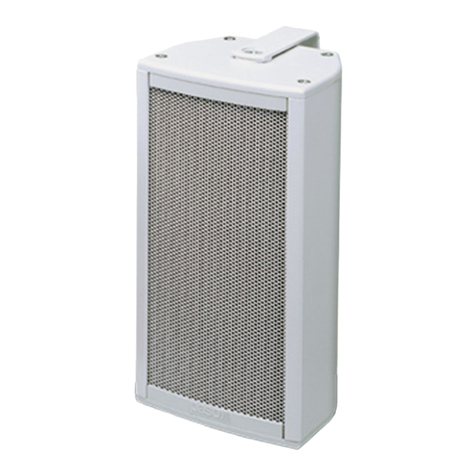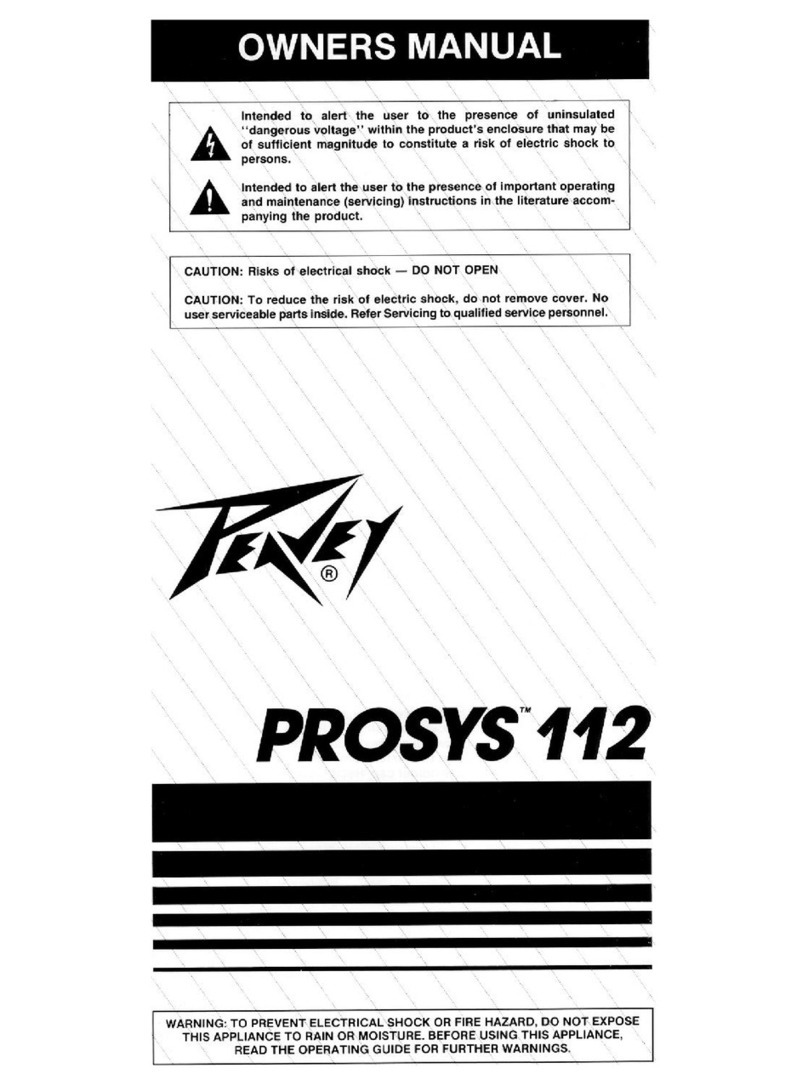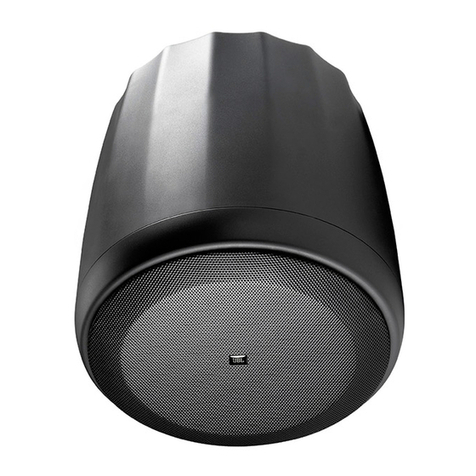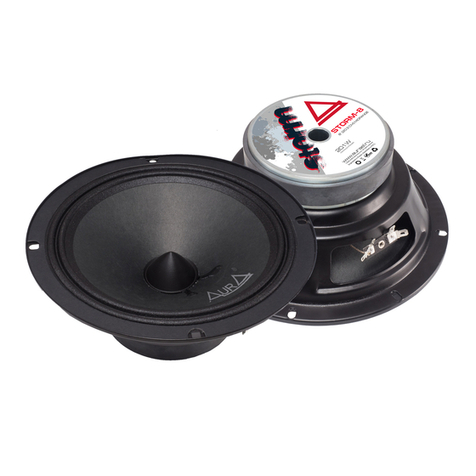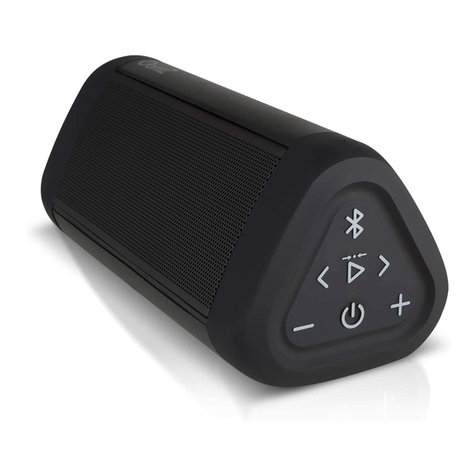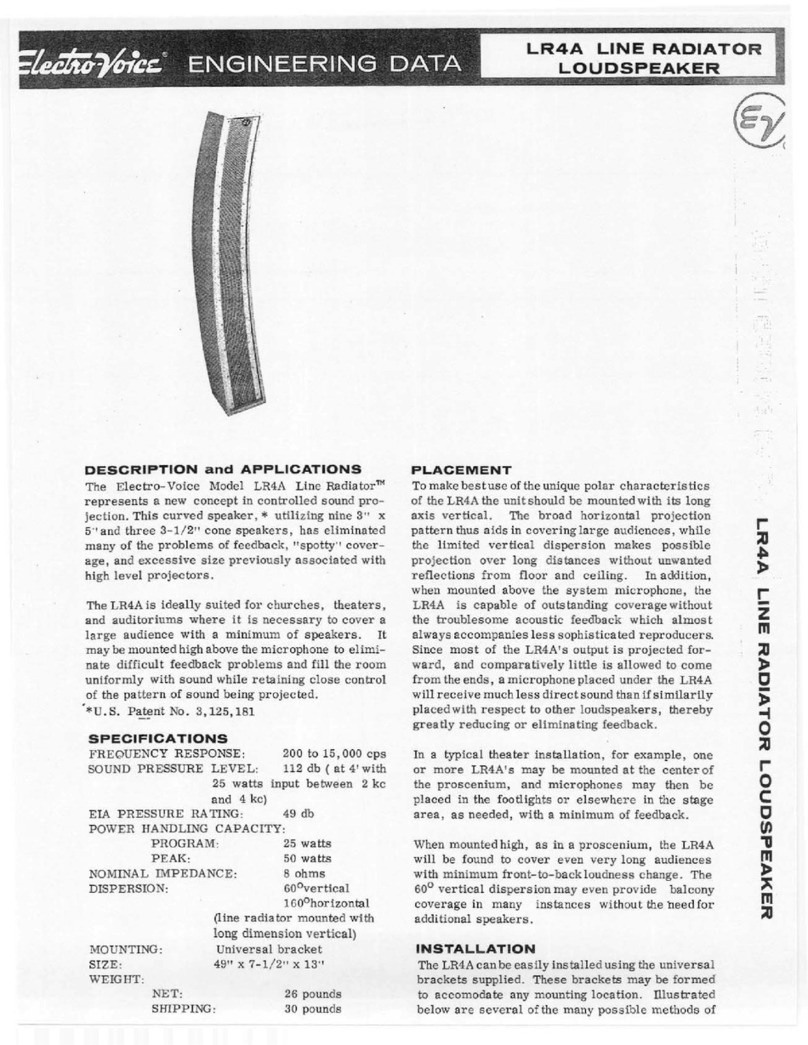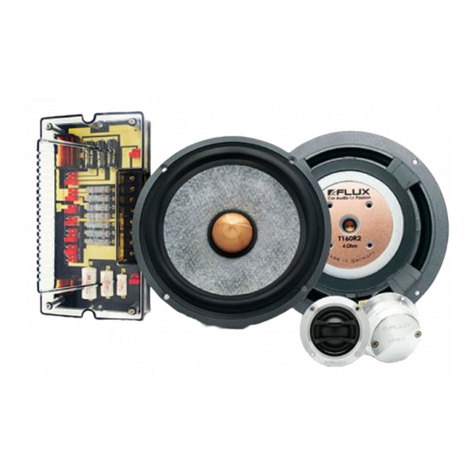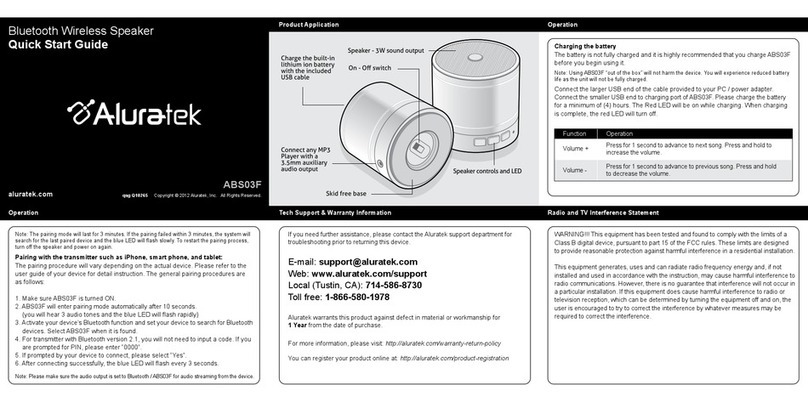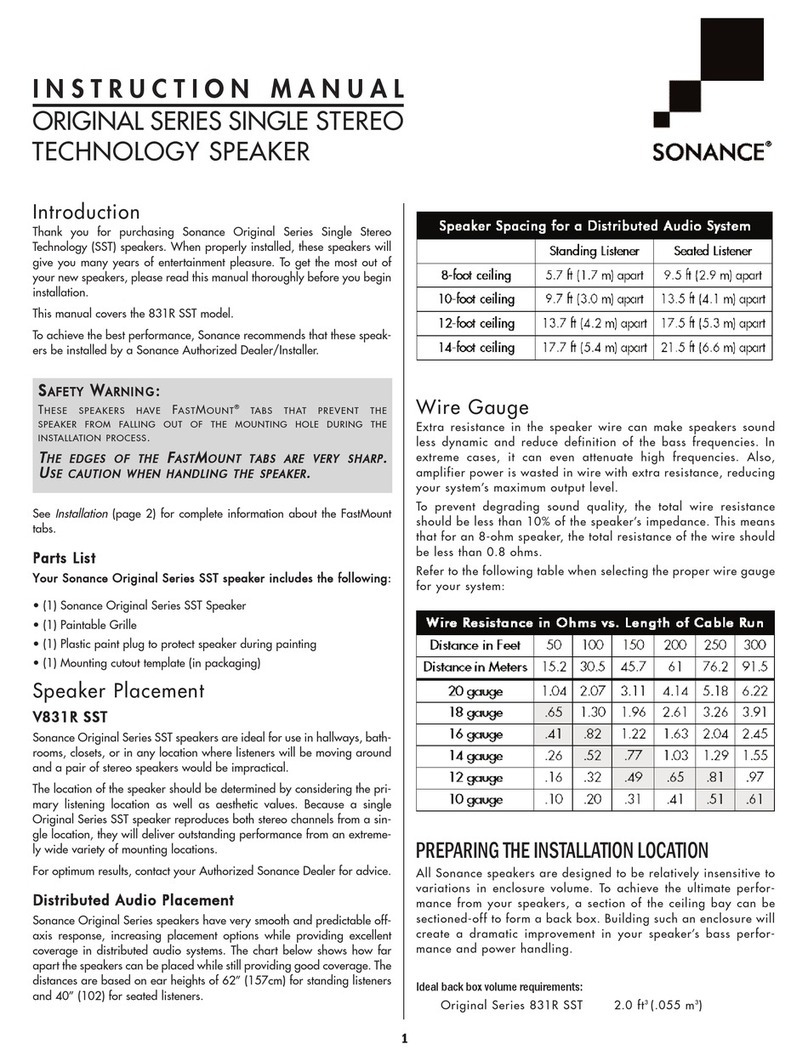
66251360 - V4.0 - 15/09/19
- 8 -
Serie 4000
Art.4303N - Istruzioni di installazione
SEGNALI DELLA MORSETTERIA
1Morsetto comune per gli indirizzi 1..8 (switch 6 = OFF)
oppure 65..72 (switch 6 = ON) EIndirizzi 5,13,21,29,37,45,53, 61 (switch 6 = OFF)
Indirizzi 69,77,85,93,101,109,117, 125 (switch 6 = ON)
2Morsetto comune per gli indirizzi 9..16 (switch 6 = OFF)
oppure 73..80 (switch 6 = ON) FIndirizzi 6,14,22,30,38,46,54, 62 (switch 6 = OFF)
Indirizzi 70,78,86,94,102,110,118, 126 (switch 6 = ON)
3Morsetto comune per gli indirizzi 17..24 (switch 6 = OFF)
oppure 81..88 (switch 6 = ON) GIndirizzi 7,15,23,31,39,47,55, 63 (switch 6 = OFF)
Indirizzi 71,79,87,95,103,111,119, 127 (switch 6 = ON)
4Morsetto comune per gli indirizzi 25..32 (switch 6 = OFF)
oppure 89..96 (switch 6 = ON) HIndirizzi 8,16,24,32,40,48,56, 64 (switch 6 = OFF)
Indirizzi 72,80,88,96,104,112,120, 128 (switch 6 = ON)
5
Morsetto comune per gli indirizzi 33..40 (switch 6 = OFF) oppure 97..104 (switch 6 = ON)
BUS Morsetti di connessione al bus
6
Morsetto comune per gli indirizzi 41..48 (switch 6 = OFF) oppure 105..112 (switch 6 = ON)
BUS
7
Morsetto comune per gli indirizzi 49..56 (switch 6 = OFF) oppure 113..120 (switch 6 = ON)
PTE Ingresso attivo basso per segnale“push to exit”
8
Morsetto comune per gli indirizzi 57..64 (switch 6 = OFF) oppure 121..128 (switch 6 = ON)
GND Massa
AIndirizzi 1,9,17,25,33,41,49, 57 (switch 6 = OFF) CRelè apri-porta contatto comune
Max 12-24
Vac/dc 3A
Indirizzi 65,73,81,89,97,105,113, 121 (switch 6 = ON)
BIndirizzi 2,10,18,26,34,42,50, 58 (switch 6 = OFF) NC Relè apri-porta contatto normalmente
chiuso
Indirizzi 66,74,82,90,98,106,114, 122 (switch 6 = ON)
CIndirizzi 3,11,19,27,35,43,51, 59 (switch 6 = OFF) NO Relè apri-porta contatto normalmente
aperto
Indirizzi 67,75,83,91,99,107,115, 123 (switch 6 = ON)
DIndirizzi 4,12,20,28,36,44,52, 60 (switch 6 = OFF) VAUX Ingresso di alimentazione 35Vdc (se utilizzato il modulo
non viene più alimentato dal BUS)
Indirizzi 68,76,84,92,100,108,116, 124 (switch 6 = ON)
RIMOZIONE/INSERIMENTO DEL PORTACARTELLINO
• Per evitare ammaccature della placca frontale, proteggere il lato che verrà in
contatto con la lama del cacciavite utilizzando una striscia di nastro isolante;
• Inserire il cacciavite (lato piatto della lama) nell’apposita fessura del por-
ta cartellino come mostrato in Fig. 5;
• Fare leva con il cacciavite come mostrato in Fig. 6 per rimuovere il por-
ta-cartellino (fare attenzione a non ammaccare la placca);
• Modicare il cartellino e riporlo all’interno del porta-cartellino quindi
riposizionare lo stesso al suo posto inserendolo nel suo alloggiamento
dal lato destro o sinistro e premendo il lato rimasto libero no all’aggan-
cio (compiendo un movimento contrario a quello fatto per estrarlo).
Fig. 5 Fig. 6
APPLICAZIONE GUARNIZIONE ADESIVA
Applicare la guarnizione adesiva Ycome mostrato in Fig. 7.
INSERIMENTO FERMI ANTIEFFRAZIONE
Inserire i fermi anti-erazione Wcome mostrato in Fig. 8.
Y
G
Fig. 7
W
Fig. 8
SPECIFICHE TECNICHE
Formato/Montaggio: Un modulo Serie 4000 / Sistema mo-
dulare Serie 4000
Pulsanti: Si, da 0 a 2 in base alla versione di
portiere elettrico
Programmazione:
Si, eseguita tramite il dip-switch a 8 vie ed
il jumper presenti sul retro del modulo
Controlli: Trimmer di regolazione volume microfo-
no e altoparlante più trimmer“Balance”
Alimentazione: Fornita dal BUS
Assorbimenti: A riposo: 28mA
In funzione: 38mA
Temperatura di lavoro:-10 +50 °C
PULIZIA DELLA PLACCA
Usare un panno morbido e pulito. Usare acqua tiepida o un de-
tergente non aggressivo.
Non usare:
• prodotti abrasivi;
• prodotti contenenti cloro;
• prodotti per la pulizia dei metalli.
Art.4303N Modulo portiere elettrico con interfaccia pulsanti tradizionali incorporata
